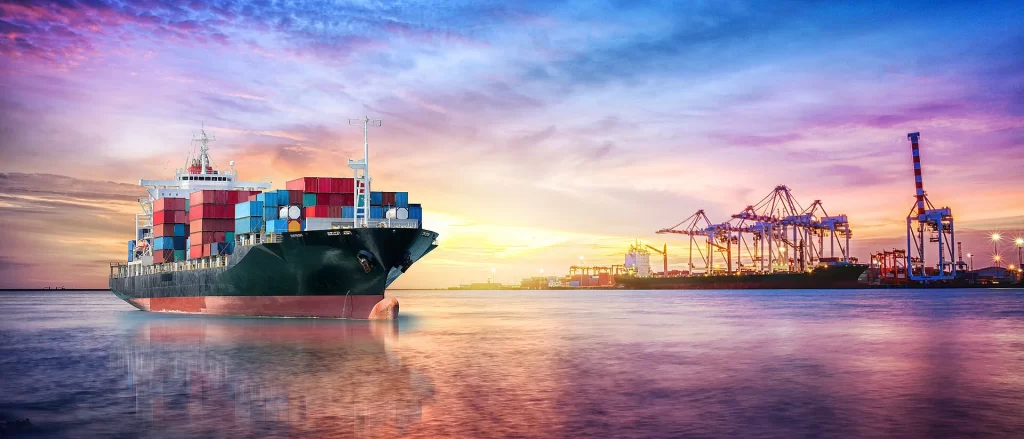When businesses think of china ports international shipping, they think of the world’s busiest gateways to trade. China’s ports handle over 40% of global container traffic, making them essential for international transport. With efficient terminals, multimodal connections, and advanced customs systems, these ports form the backbone of shipping, logistics, and global supply chains. In this article, we examine what china ports international shipping involves, its modes of transport, regional performance, common challenges, and real-world case studies.
What is China Ports International Shipping?
China ports international shipping refers to the movement of cargo through China’s maritime gateways and inland networks to overseas destinations. It includes:
- Maritime container shipping (FCL & LCL)
- Air freight services via port-adjacent airports
- Rail connections linking ports to Europe and Central Asia
- Road transport supporting hinterland distribution
- Customs clearance and bonded warehousing
Together, these elements transform Chinese ports into global logistics hubs.
What Do China Ports Do?
China’s ports do far more than loading and unloading ships. They also:
- Facilitate transshipment of containers across regions
- Provide warehousing and consolidation for exporters
- Offer customs and inspection services for compliance
- Integrate with rail and road transport to move cargo inland
- Support special cargo handling like bulk, oil, and chemicals
👉 As a result, shippers gain a seamless transport and shipping experience from origin to destination.
Modes of Transportation via China Ports
| Mode of Transport | Key Benefit | Example Route | Avg. Transit Time | Typical Cost |
|---|---|---|---|---|
| Sea Freight | Low cost, high volume | Shanghai → Los Angeles | 20–28 days | $1,700–$2,400/40HQ |
| Air Freight | Fastest option | Shenzhen → Paris | 4–6 days | $5.5–$7.2/kg |
| Rail Freight | To Europe via Belt & Road | Xi’an → Warsaw | 15–18 days | $3,800–$5,200/container |
| Road Freight | Regional cross-border | Guangzhou → Hanoi | 6–9 days | $1,000–$1,600/truckload |
Relevant Terms and Conditions
- FOB (Free on Board): Seller delivers to port; buyer pays for freight.
- CIF (Cost, Insurance & Freight): Seller covers freight and insurance.
- DDP (Delivered Duty Paid): Shipper handles duties and delivery.
- Bill of Lading: Legal proof for sea freight shipments.
- Air Waybill: Required for international air cargo.
- Demurrage & Detention: Charges for keeping containers too long at ports.
Regional Performance of China Ports
- In North America, china ports international shipping moves millions of TEU annually, though congestion at Los Angeles and Long Beach can cause delays.
- Meanwhile in Europe, rail links from ports such as Shanghai and Tianjin shorten delivery times, making shipping more efficient.
- When looking at Africa, longer routes increase costs, yet Chinese ports maintain partnerships with Lagos and Durban to ease logistics.
- For the Middle East, strong links with Dubai ensure balanced sea-air cargo movement.
- Across the Asia-Pacific, regional ports like Shenzhen and Qingdao serve as key hubs for cross-border trucking and feeder shipping.
How to Avoid Common Problems
📍Plan shipments early: Peak seasons cause rate hikes and space shortages.
📍Request detailed quotes: Hidden terminal fees can surprise unprepared shippers.
📍Use multimodal options: Rail or road can bypass congested sea lanes.
📍Expert advice:
- “Prepare HS codes in advance to avoid clearance issues.” – Customs Manager, Ningbo
- “Combine sea and rail shipping for balance of speed and cost.” – Logistics Advisor, Hamburg
Real-World Case Studies
📦 Case 1: China → USA (Consumer Electronics)
- Cargo: 20,000 smartphones
- Mode: Ocean freight (Shanghai → Los Angeles)
- Cost: $2,200 per 40HQ, total $8,800 (4 containers)
- Transit Time: 23 days
- Result: Delivered on time before Black Friday sales
📦 Case 2: China → Germany (Auto Parts)
- Cargo: 1 × 40HQ container
- Mode: Rail freight (Xi’an → Hamburg)
- Cost: $4,300
- Transit Time: 16 days
- Result: Saved 12 days vs. sea freight, 40% cheaper than air
Conclusion
China ports international shipping represents the lifeline of global commerce. By integrating sea, air, rail, and road networks, China’s ports ensure cost-effective and reliable logistics. Whether sending electronics to the USA, machinery to Europe, or textiles to Africa, these ports provide smooth transport and shipping solutions that power global trade.
- Consult TJ China Freight Forwarding for the lowest quote. They will provide you with reliable, cost-effective service.
FAQ:
Q1.What are the busiest international shipping ports in China?
Shanghai, Ningbo, Shenzhen, and Qingdao.
Q2.How do ports in China handle dangerous goods?
Through certified facilities, permits, and strict packaging standards.
Q3.Which port is best for shipping to Africa?
Ningbo and Shanghai have strong connections to Lagos and Mombasa.
Q4.What role do bonded warehouses play in port logistics?
They allow deferred customs duties and easier re-exports.
Q5.How do ports improve customs clearance efficiency?
By using electronic declaration and AI-driven risk checks.





